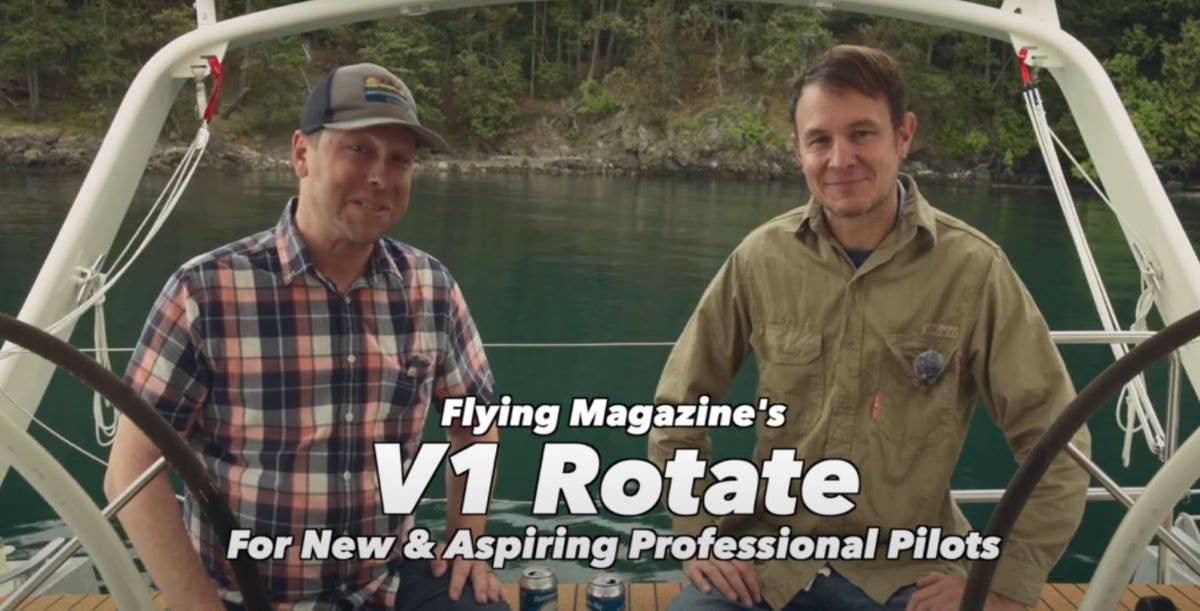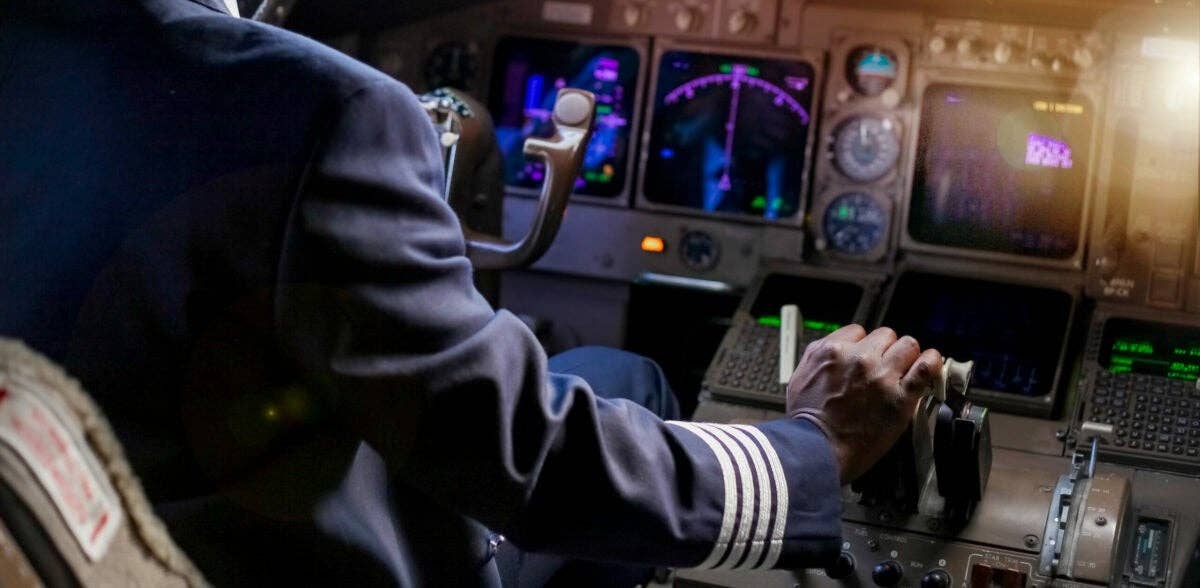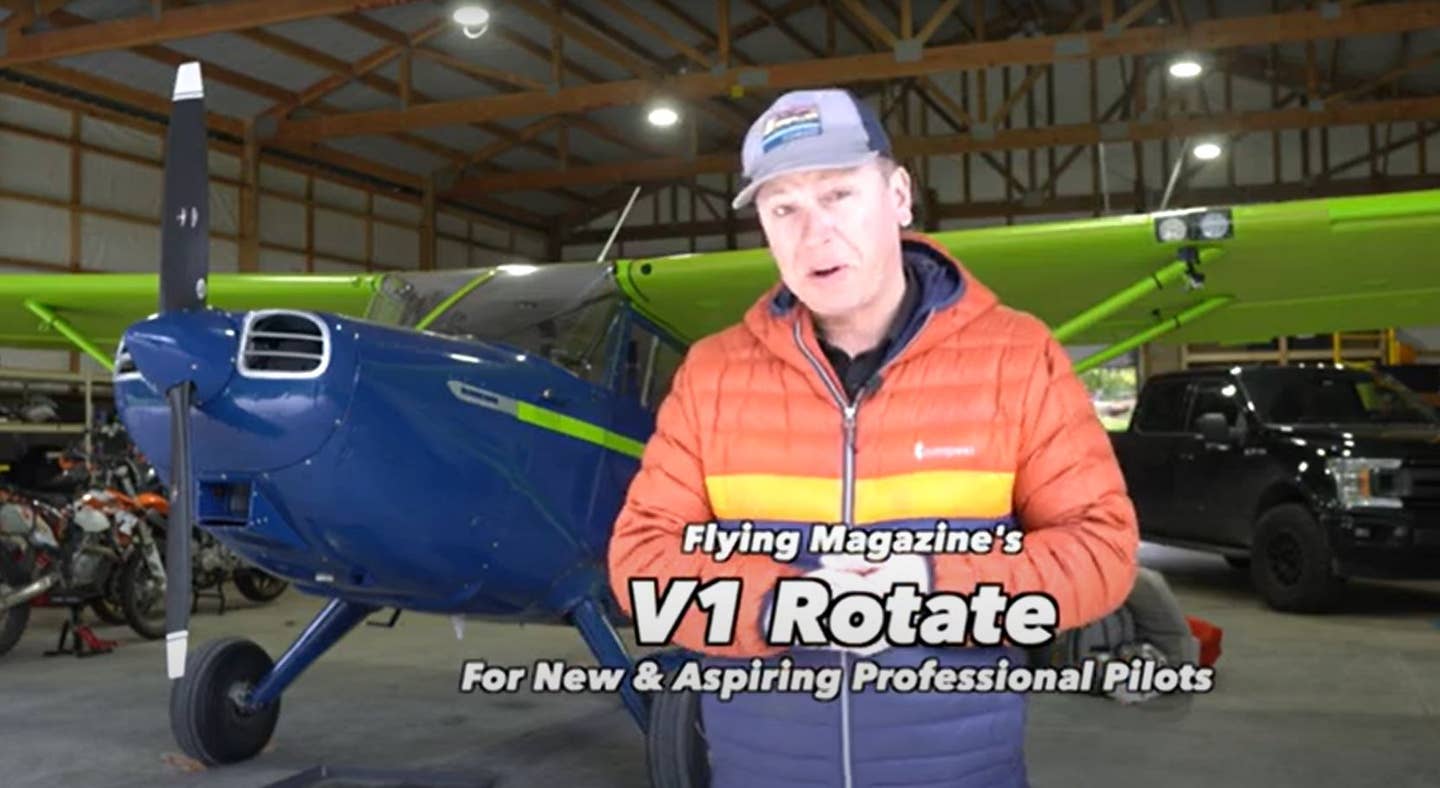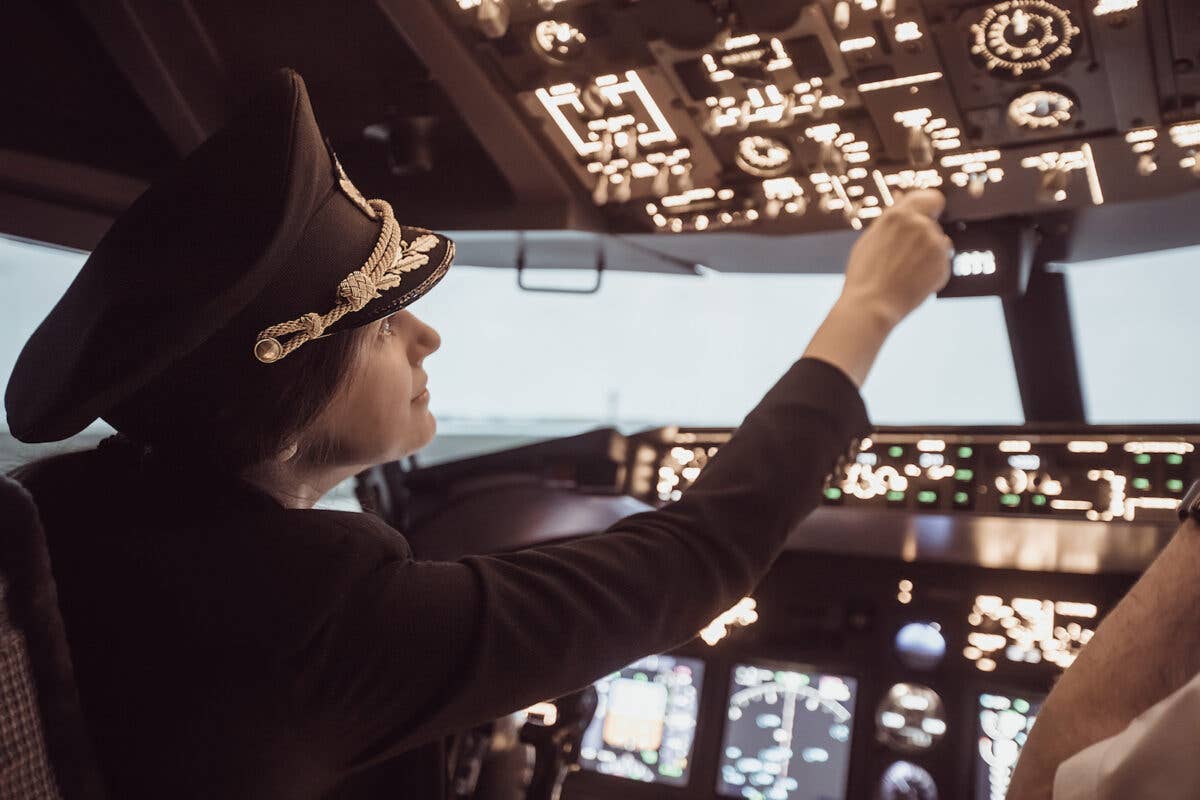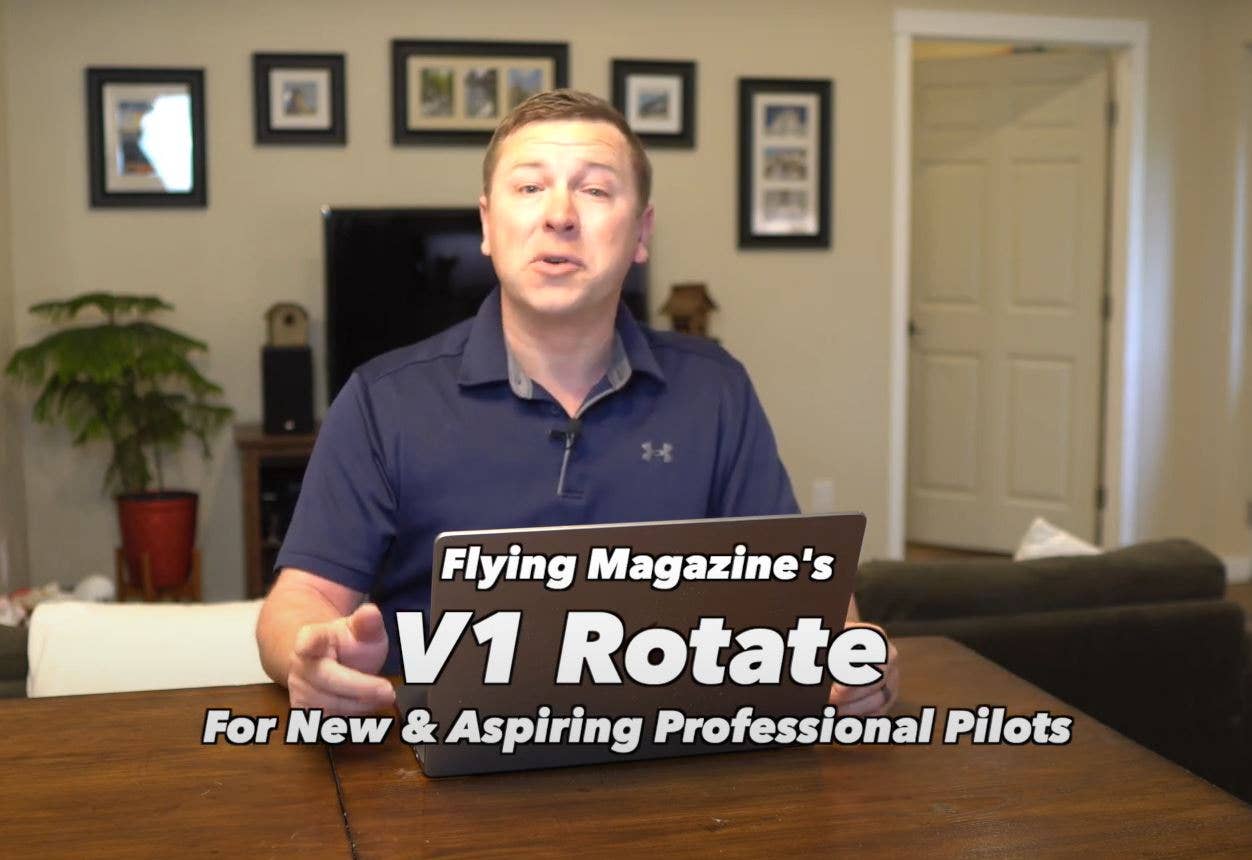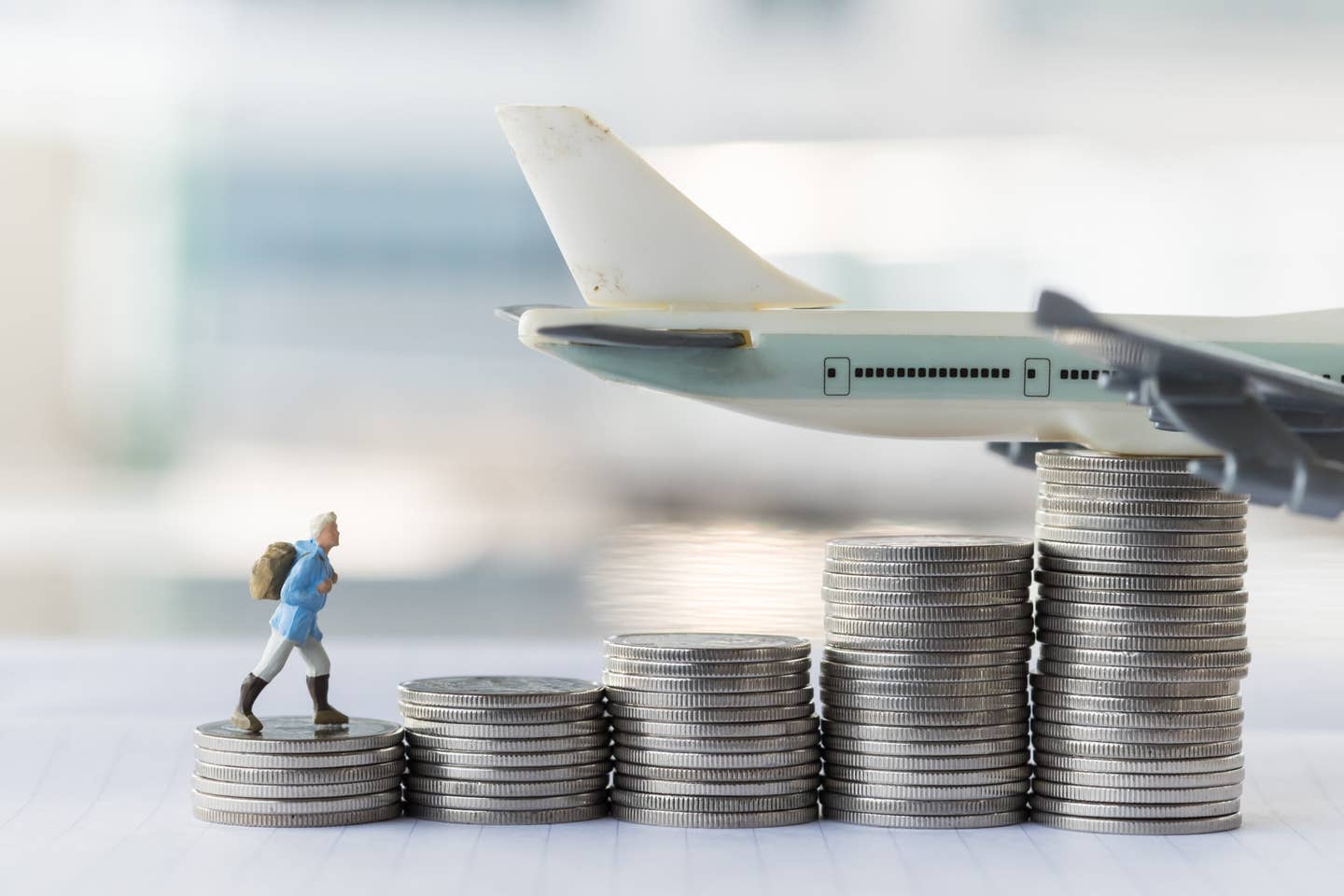What Is the Right Age To Start Flight Training?
Flight training before graduating high school is an excellent idea for any teenager interested in a flying career, but don’t rush.
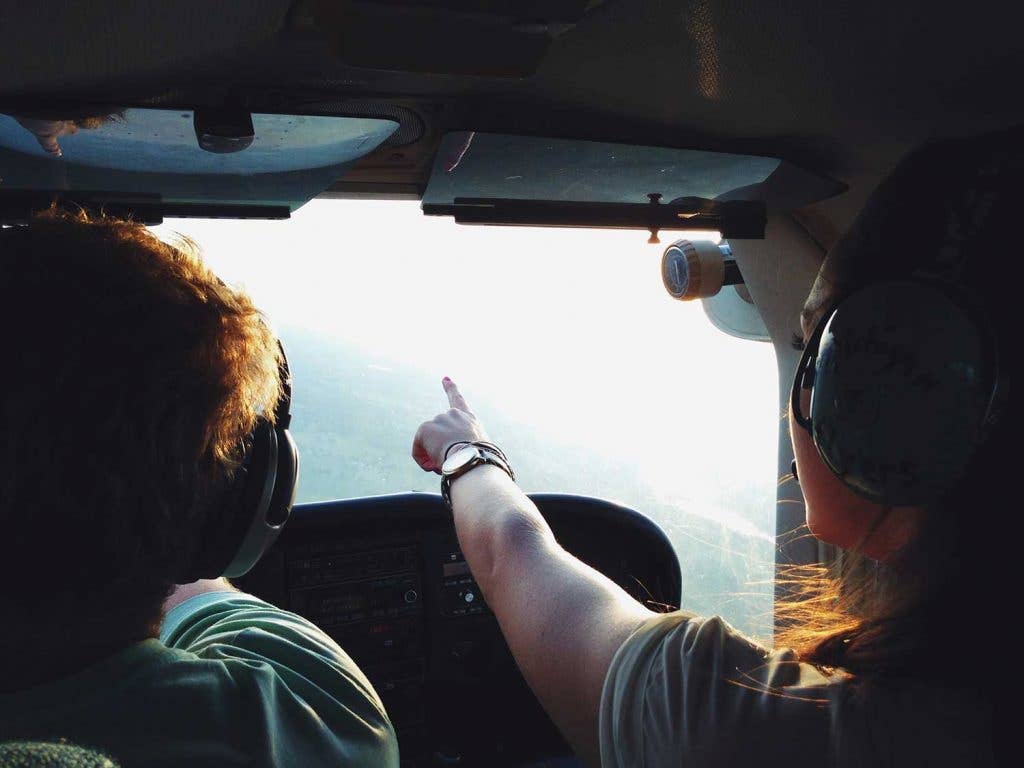
While there is no minimum age to start flight training, you need to be able to reach the rudder pedals.
[FLYING Archives]
With the recent well-publicized upsurge in pay and benefits thanks to the pilot shortage, there’s been a great deal of renewed interest in flight training among prospective professional pilots young and old—and also among interested parents looking to set their progeny on a lucrative career path.
Recently, I’ve seen a question surface which I’m perhaps uniquely qualified to answer: Is there an advantage to starting flight training before graduating high school? How young is too young? Is there an ideal age?
Technically there is no minimum age to start flight training, a fact I discovered as an aviation- stricken 13-year old who had just taken the stick for the first time on an EAA (Experimental Aircraft Association) Young Eagles ride. I called the local FSDO (Flight Standards District Office) and managed to get a hapless inspector on the phone; he confirmed that one must be 16 years old to solo and 17 to earn one’s private pilot certificate in an airplane (14 and 16, respectively, in a glider), but there is no minimum age to begin dual instruction with a flight instructor.
“Can you reach the rudder pedals in a Cessna 150?” he asked. I didn’t know. A week later, an introductory flight confirmed that I could, with the aid of a pillow. I started taking lessons, scrimping and saving $56 (!) for an hour of dual at the end of each month. I soloed on my 16th birthday and passed my private pilot check ride on my 17th. Today, at the age of 41, I’ve been flying more than two-thirds of my life and have some 15,000 hours of flight time—nearly two full years spent airborne.
In retrospect, I’m a little ambivalent about the path I took. It worked for me because I was utterly obsessed with flight at 13 years old and too impatient to wait a few years—actively flying kept me focused through my teen years. Considering the fact that I was a broke kid paying out of pocket, starting early helped spread the cost over four years. Had I waited, it’s quite possible my interest and my scant earnings would have wandered. And yet I’m keenly aware that the way I did it was less than efficient, and isn’t necessarily the best path for every interested youth.
Law of Recency
Any flight instructor will tell you that a month between lessons is way too long (“law of recency”).
You forget a great deal over a month, particularly when the skill is so fresh, meaning that each subsequent lesson wastes time reteaching things. In my opinion, the most efficient pace for learning to fly is one to two lessons a week. Starting early means that even if you retain the information well, you are likely to exceed the required hours by a good bit. In 1997, I soloed at 32.4 hours (having averaged 11 hours a year until then), and the next year, I got my private at 71.6 hours. Those were well above-average numbers back in the pre-TAA (technically advanced airplane) age. If you’re looking for maximum efficiency, I would not start as early as I did—I’d wait until 15 or 16.
That said, I do think that taking flight training before graduating high school is an excellent idea for any youth interested in a flying career (including those planning on a military track). I’ve taught primary students in both traditional and accelerated settings, and I rather strongly feel that the private certificate shouldn’t be rushed, because it introduces so many new skills and fundamental knowledge that will be built upon over the course of one’s career.
For anyone considering a pilot career, private pilot training should afford one the chance to fall in love with flying and assess whether you’re well suited to it, without the pressure of having already entered a collegiate program or aviation academy. I’ve come across too many recent stories of primary students getting utterly burned out before they’ve even experienced the magic of their first solo cross-country flight.
Now, it’s true that some programs won’t give you full credit for a private certificate earned outside of a Part 141 or collegiate setting. In my case, a local community college gave me full credit for my private while I was in high school, which allowed me to transfer into the University of North Dakota’s flight program without taking their private pilot test course. If this is not an option for you—and you have your heart set on a program that is not transfer-friendly—consider training at your local FBO just through your first solo, perhaps during your senior year of high school. It will give you a good taste of what flying is about, and will likely allow you to go through your subsequent school’s private pilot course in the minimum allotted hours (a rarity these days). If you are aiming for a military flight slot, prior flight experience will give you a leg up over other applicants in the ultra-competitive selection process and rigorous initial training.
Sustaining Motivation
Looking back at my early flight training, I realize that those first few years of monthly lessons served more to keep me interested and motivated than anything, and there are cheaper ways to do that. One of the best is the Civil Air Patrol’s cadet program, so long as you don’t mind its quasi-military flavor (which varies considerably by wing and squadron, according to the tastes of the local commanders). Another is the Experimental Aircraft Association; most chapters involve youth in building and restoration projects, which is an excellent way to gain aviation knowledge while meeting local pilots and getting invited to fly in their airplanes. Many chapters also offer scholarships for youth flight training. For those who live near a soaring club, gliders offer a fantastic introduction to the fundamentals of flight in a communal setting. And lastly, flying with friends and family who are not instructors can be a cost-effective option in one’s early teens and prior, even if you can’t log the hours. Any prior experience will make subsequent flight training more effective, giving you more bang for your buck.
All this said, if you or your child is an aviation-obsessed early teen or preteen who just can’t wait to start lessons, and you can make it work financially, there is nothing in primary training that a reasonably intelligent kid can’t readily grasp. Learning to fly delivers a great deal of enjoyment and confidence at an age when “grown-up” activity options are generally limited. I’m grateful that my parents gave me the freedom to fly as early as they did; as a result, I have a lifetime of flying to look back on, with many fond memories throughout.

Sign-up for newsletters & special offers!
Get the latest FLYING stories & special offers delivered directly to your inbox

